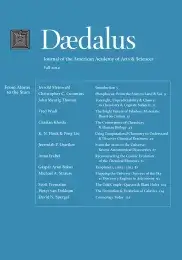Cosmology Today
We seem to live in a simple but strange universe. Our basic cosmological model fits a host of astronomical observations with only five basic parameters: the age of the universe, the density of atoms, the density of matter, the initial “lumpiness” of the universe, and a parameter that describes whether this lumpiness is more pronounced on smaller physical scales. Our observations of the cosmic microwave background fluctuations determine these parameters with uncertainties of only 1 to 2 percent. The same model also provides an excellent fit to the large-scale clustering of galaxies and gas, the properties of galaxy clusters, observations of gravitational lensing, and supernova-based measurements of the Hubble relation. This model implies that we live in a strange universe: atoms make up only 4 percent of the visible universe, dark matter makes up 24 percent, and dark energy – energy associated with empty space – makes up 72 percent.
Cosmology is a historical science. Because light travels at a finite speed, when we look out in space, we look back in time. We see the sun as it was eight minutes ago, and we see nearby stars as they were five, ten, or a hundred years ago. It takes light approximately 2.5 million years to travel from the Andromeda galaxy to our eyes, so when we stare at our nearest major neighbor with a telescope, we observe Andromeda as it was back before the dawn of man. The farther out we look, the farther back we look in time. When the Hubble Space Telescope observes a distant galaxy, it sees the galaxy as it was perhaps 12 billion years ago. Our observations of the cosmic microwave background involve the oldest light, photons that formed only one year after the Big Bang and last interacted with atoms just four hundred thousand years after the Big Bang. This light travels for 13.7 billion years before reaching us, and it brings us our universe’s baby picture.
Our basic model of cosmology rests on Einstein’s nearly century-old theory of general relativity. As my late academic great grandfather Johnny Wheeler used to teach, “General Relativity consists of two simple ideas: matter tells space how to curve and space tells matter how to move.” On the scale of our . . .
